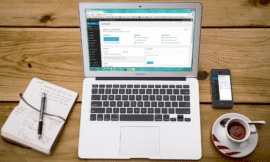Let’s keep it real—software development sounds more complicated than it really is. At its core, it’s just the process of building the apps, websites, and digital tools we all use every day. Think of it like baking a cake. You need a recipe (plan), ingredients (code), tools (software), and a whole lot of patience and precision to get it right. When everything comes together, boom—you’ve got a working product people can actually use.
Back when I first heard the term “software development,” I pictured someone in a dark room, typing furiously on a black screen full of green code. Turns out, it’s not quite like the movies. It’s more like solving real-world problems in creative ways—sometimes with coffee stains on your hoodie and a cat walking across your keyboard.
My Journey into Software Development
Let me take you back to my early 20s. I was curious about how websites worked. Not just how they looked—but how clicking a button magically did something. I started Googling. Then I fell down a rabbit hole of HTML tutorials, JavaScript guides, and late-night Stack Overflow marathons.
I didn’t have a computer science degree. Heck, I didn’t even know what a “full-stack developer” meant at the time. But I was hooked. I built my first project—a simple to-do list app. It was buggy, slow, and looked like it belonged in 2004. But it worked. That feeling? Pure magic.
Since then, I’ve worked on everything from mobile apps to e-commerce platforms. I’ve been part of small startups and big enterprise teams. And every step has taught me something new—not just about coding, but about patience, problem-solving, and the joy of continuous learning.
Core Phases of Software Development
Now let’s break down the process. Whether you’re building a mobile app, web app, or desktop software, the stages of software development stay pretty consistent. Here’s how I like to explain it.
1. Planning and Requirements Gathering
This is where everything starts. Before you write a single line of code, you need a roadmap. What’s the problem you’re solving? Who’s it for? What features do they need?
I once skipped this step on a client project because I was too eager to “just start coding.” Big mistake. We ended up rebuilding half the app because the goals weren’t clear. Lesson learned: planning is your best friend.
2. Design and Architecture
Design isn’t just about how things look. It’s about how they work. UX (user experience) and UI (user interface) design guide the flow of your app. Think of it like drawing the blueprint for a house—get it wrong, and the whole thing might fall apart.
Tools like Figma and Sketch help here. I use them to map out wireframes and user flows before jumping into development. This saves time, money, and headaches later.
3. Coding (Where the Magic Happens)
Ah, the fun part. This is when you start bringing everything to life. You choose your stack—maybe React for the frontend and Node.js for the backend. Or Python. Or Ruby. There’s no one-size-fits-all.
When I first started, I spent more time fixing broken code than writing new features. But that’s normal. Bugs are part of the journey. What helped me most? Breaking down problems into small chunks and writing code that was easy to read, even a week later.
4. Testing and Debugging
If you’ve ever launched something only to see it crash immediately, you know why testing matters. You don’t want your users to be your testers.
Automated testing tools like Jest, Selenium, and Cypress can catch bugs before your users do. But honestly? I still find myself doing old-school manual testing too—clicking every button just to be sure.
5. Deployment and Maintenance
Finally, you ship it. But launching the software isn’t the end—it’s just the beginning. Maintenance is where many developers drop the ball.
I use GitHub for version control and platforms like Netlify or Heroku for quick deployments. Once your code is live, you need to monitor performance, fix bugs, and sometimes roll out updates based on user feedback.




